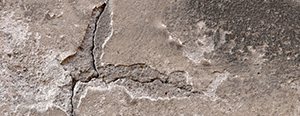Category
- Concrete Best Practices

The durability of concrete is defined by the ability of concrete to resist weathering action and chemical attack, while maintaining its desired engineering properties. Due to the use of inappropriate materials, poor construction practices, insufficient curing and/or improper mix designs, many structures show serious premature deterioration. This is a global problem that costs both the public and private sectors worldwide billions of dollars annually. About 5 billion cubic yards of concrete is produced globally every year (Source: Cement Association of Canada), with The New Civil Engineer (NCE)/Institution of Civil Engineers (ICE) reporting that approximately 40% of construction work in the UK goes toward repair and maintenance work rather than creating new infrastructure (Source: Sustainable Concrete for the 21st Century – “Concept of Strength through Durability” – Page 4) Optimizing the durability of concrete ultimately leads to fewer repairs or premature replacements of deteriorating structures.
Measuring the durability factor of concrete to determine its longevity, and ability to withstand local weathering and use, is difficult to predetermine. It is, however, an important factor in identifying how sustainable the structure will ultimately be.

Another factor in defining durability depends on how long a building is actually designed to last. If a building is designed to last fifty years, and lasts sixty before major repairs or replacements are necessary, then that building by definition is durable. If a building is designed to last 100 years, and lasts 70, it cannot be considered a durable structure.
Questions to consider when determining concrete durability:
- What is the project to be used for (current and future use)?
- What type of environment will this structure be exposed to?
- How many years must this structure remain?



